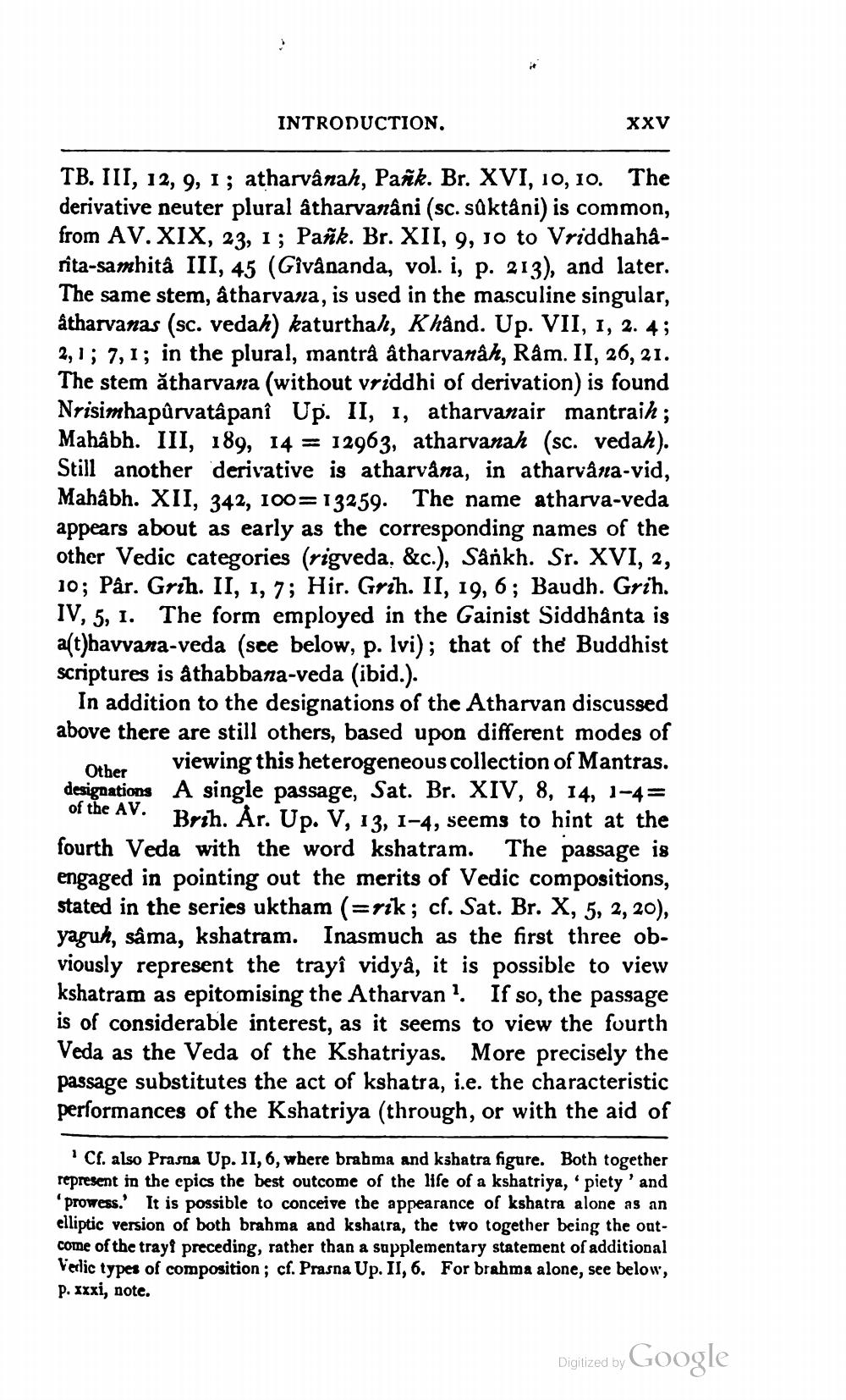________________
INTRODUCTION.
XXV
The
TB. III, 12, 9, I; atharvânah, Pañk. Br. XVI, 10, 10. derivative neuter plural âtharvanâni (sc. sûktâni) is common, from AV. XIX, 23, 1; Pañk. Br. XII, 9, 10 to Vriddhahârita-samhitâ III, 45 (Givânanda, vol. i, p. 213), and later. The same stem, âtharvana, is used in the masculine singular, âtharvanas (sc. vedah) katurthal, Khând. Up. VII, 1, 2. 4; 2,1; 7, 1; in the plural, mantrâ âtharvanâh, Râm. II, 26, 21. The stem ǎtharvana (without vriddhi of derivation) is found Nrisimhapurvatâpanî Up. II, 1, atharvanair mantrail; Mahâbh. III, 189, 14 = 12963, atharvanah (sc. vedah). Still another derivative is atharvâna, in atharvâna-vid, Mahâbh. XII, 342, 100=13259. The name atharva-veda appears about as early as the corresponding names of the other Vedic categories (rigveda, &c.), Sânkh. Sr. XVI, 2, 10; Pâr. Grth. II, 1, 7; Hir. Grih. II, 19, 6; Baudh. Grih. IV, 5, 1. The form employed in the Gainist Siddhânta is a(t)havvana-veda (see below, p. lvi); that of the Buddhist scriptures is åthabbana-veda (ibid.).
Other
of the AV.
In addition to the designations of the Atharvan discussed above there are still others, based upon different modes of viewing this heterogeneous collection of Mantras. designations A single passage, Sat. Br. XIV, 8, 14, 1-4= Brih. År. Up. V, 13, 1-4, seems to hint at the fourth Veda with the word kshatram. The passage is engaged in pointing out the merits of Vedic compositions, stated in the series uktham (=rik; cf. Sat. Br. X, 5, 2, 20), yaguh, sâma, kshatram. Inasmuch as the first three obviously represent the trayî vidyâ, it is possible to view kshatram as epitomising the Atharvan1. If so, the passage is of considerable interest, as it seems to view the fourth Veda as the Veda of the Kshatriyas. More precisely the passage substitutes the act of kshatra, i.e. the characteristic performances of the Kshatriya (through, or with the aid of
'Cf. also Prasna Up. II, 6, where brahma and kshatra figure. Both together represent in the epics the best outcome of the life of a kshatriya, 'piety' and 'prowess.' It is possible to conceive the appearance of kshatra alone as an elliptic version of both brahma and kshatra, the two together being the outcome of the trayf preceding, rather than a supplementary statement of additional Vedic types of composition; cf. Prasna Up. II, 6. For brahma alone, see below, p. xxxi, note.
Digitized by Google




